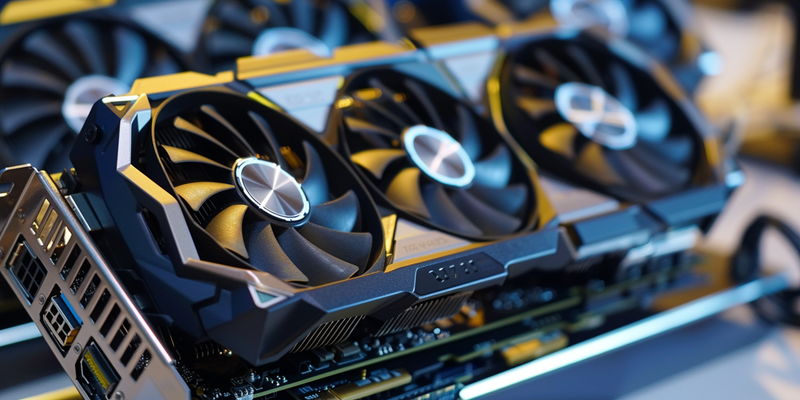The ever-changing landscape of the graphics card industry is marked by fierce rivalry among top players that fuels progress and makes technology more accessible to consumers. In the midst of this dynamic market, AMD has made waves with its Radeon RX 7800 XT, capturing the spotlight due to a substantial decrease in price. This strategic pricing adjustment may very well tip the scales in the consumer market, potentially influencing buyers to consider the Radeon RX 7800 XT as a more attractive option compared to its competitors.
Cost-effective without compromising on quality, the RX 7800 XT caters to a wide array of consumers, from casual users to serious gamers. This move by AMD could catalyze a shift in consumer buying patterns, as people seek out the best value for their money in a market that’s typically characterized by a rapid pace of technological advancements and frequent product releases. By maintaining the essence of what makes it a formidable contender while becoming easier on the wallet, the Radeon RX 7800 XT is set to garner heightened interest and possibly alter the competitive landscape.
A New Benchmark in Affordability
Value for Money
AMD’s RX 7800 XT, originally retailing at $529.99, has observed a significant price reduction to $468.99 with a Newegg coupon, shifting the competitive landscape. This adjustment is not just a temporary promotion but suggests a strategic incursion into the midrange graphics card sector, directly challenging Nvidia’s similar offerings. The price drop can be viewed as a tactical maneuver to draw in both enthusiastic gamers and serious professionals who are on the lookout for potent gaming performance without breaking the bank. AMD’s move could incite a ripple effect in the market, fostering heightened competition that benefits consumers with more economical options for high-end gaming capabilities. This price restructuring positions the RX 7800 XT as a formidable contender in the realm of mid-tier graphics solutions, with the potential to effectively disrupt current market dynamics.
Reactions to the Price Drop
The gaming community is abuzz with excitement over the recent price reduction of the RX 7800 XT graphics card. This strategic move has propelled the card to newfound popularity, as gamers recognize the enhanced value it now presents. With advanced ray tracing features and a generous 16GB of VRAM, the RX 7800 XT stands out as a more appealing option than before. This new pricing aligns with what consumers are looking for, striking a commendable balance between cost and performance. Initially, the card received praise for its performance ratio even before the drop, implying that the new price is not just a marketing ploy but a genuine boost to the card’s market position. The affirmative reception illustrates that the card’s pricing adjustment is not just well-timed but also well-suited to meet the expectations and desires of the gaming populace.
Analyzing Performance and Drawbacks
Marginal Improvement
The RX 7800 XT has come under scrutiny for providing only slight performance enhancements over the RX 6800 XT, its predecessor. This incremental improvement has given the tech community and professionals pause when considering the value of upgrading. Despite the lower price point, the core issue remains: Is the slight uptick in performance sufficient to meet the expectations of consumers who are accustomed to significant strides in tech advancement? AMD finds itself at a crossroads, facing the challenge of convincing a market driven by substantial innovation that modest upgrades are still worthwhile. This dilemma underscores the broader tension within the tech industry, where the pace of progress is swift, and every new release is expected to deliver a major leap forward. As the RX 7800 XT illustrates, even tech giants like AMD must grapple with the reality that not all advances can be groundbreaking, yet they must find a way to appeal to a consumer base hungry for the next big thing.
Power Consumption and Ray Tracing
Another point of discussion is the relatively high power consumption of the RX 7800 XT, which could be a consideration for energy-conscious users. Furthermore, while AMD has made strides in enhancing ray-tracing and upscaling technology with this model, the consensus indicates it still trails behind Nvidia. These are critical factors for potential buyers to weigh, particularly those who prioritize energy efficiency or the absolute forefront of graphical technology. Despite these considerations, the RX 7800 XT’s more accessible price point may counterbalance its shortcomings for many users.
The RX 7800 XT’s journey, with its recent price shift, illustrates the complex considerations manufacturers face in a market driven by incremental advancements. The price drop injects new life into the product, yet its success ultimately depends on how well it aligns with consumer priorities.

